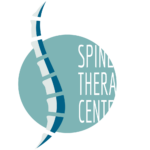Stem Cells and Growth Factors in Spine Diseases
The use of stem cells and growth factors to treat various diseases of the spine is constantly gaining ground in recent years in the context of regenerative medicine.

PhD Priv. Consultant Spine Surgeon
Ass. Professor at Medical School of Democritus University of Thrace
Stem Cells and Growth Factors
These are treatments whose know-how and methodology are rapidly evolving, as early clinical trials have shown particularly encouraging results.
A typical example of growth factor therapy is the use of Platelet Rich Plasma (PRP) in the use of degenerative Intervertebral Disc disease. Degenerative disc disease is considered to be the most common cause of low back pain, while also being the initial stage in the degenerative process of the spine.
PRP is essentially a part of the patient’s natural blood, which is processed by an appropriate procedure. The rationale behind the administration of PRP is that growth factors and various other biological molecules, which are inherent in the beautiful components of our blood (and especially, in platelets), can have a repair effect on tissue damage by inducing tissue regeneration and regulating the inflammatory-immune response at the cellular level. Initially, 10-50 mL of peripheral blood is taken from the patient by simple blood sampling, which is processed by a special procedure (called centrifugation) in a device to separate the plasma containing the platelets from the other blood components. . This procedure leads, within a short time, to the formation of a ready-to-inject solution (in an amount of 1-3 ml) into the affected intervertebral disc.
The infusion is performed in the operating room, under local anesthesia and X-ray guidance, with the duration of the entire surgery ranging from 10 to 20 minutes. The patient returns to the ward, while mobilized immediately after the infusion and is discharged within the next few hours from the hospital. It is important to emphasize that the existing literature data show that the same procedure can be applied in the presence of pathology and in the posterior joints (facet joints), which is essentially the next stage which follows the degeneration of the intervertebral disc. However, it should also be noted that the above treatment should ideally be applied only in the early stages of intervertebral disc disease and joints based on specific radiological classifications, and not in final stages, such as in the presence of intervertebral disc herniation or spinal stenosis, so that to ensure their optimal benefit for the patient.
Through the use of these minimally invasive regenerative therapies, we essentially seek to avoid surgery, which is of paramount importance to the patient, but a procedure that is necessary to perform in the presence of conditions such as intervertebral disc herniation.
The use of stem cells for minimally invasive treatment of degenerative intervertebral disc disease is also increasingly studied in the modern literature. This is the intra-disc infusion of mesenchymal stem cells, which are cells with a wide potential for differentiation into specific cell types that are normally present in various tissues of the adult.
These cells can be harvested by minimally invasive techniques (e.g., by liposuction from the adipose tissue of the abdominal wall) and, after special treatment in the laboratory, prepared in the form of a ready-to-administer solution. Administration can be performed by the same procedure as previously described and the patient is discharged from the hospital on the day of surgery, after a few hours.
The data from the trial of this cell therapy in patients with degenerative disc disease remain early, but particularly satisfactory as it seems to be a safe and effective treatment option in these patients, which can theoretically delay or even completely suspend the the possibility of open surgery.


